A Film Spectrum
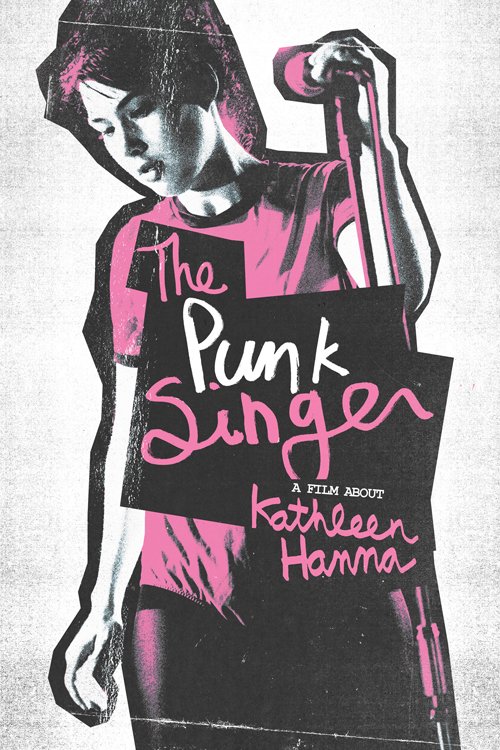 I am feeling very pleased with myself in my progress with one of my New Year’s resolutions: I vowed to make an effort to see more films this year (in the cinema, rather than on DVD). So far I have seen three in January: The Punk Singer, Her, and Saving Mr Banks – three films that are all very different from one another.
I am feeling very pleased with myself in my progress with one of my New Year’s resolutions: I vowed to make an effort to see more films this year (in the cinema, rather than on DVD). So far I have seen three in January: The Punk Singer, Her, and Saving Mr Banks – three films that are all very different from one another.
The first I saw by accident, but the ridiculous concatenation of circumstances involved in this accident indicate that I was fated to see it. I was in fact meant to see the French film Rust and Bone (also apparently very good). But a series of fortunate events (broken down trams, last-minute cab rides, an out-of-place private party, a closing-down cinema, bad signage, a misplaced ticket and a blasé usher) lead me to feel I had fallen down the rabbit-hole, groping around for a seat in a dark cinema and bemusedly watching The Punk Singer.
a series of fortunate events … lead me to feel I had fallen down the rabbit-hole
The Punk Singer
I have never been into punk music and know little about the scene, but this did not stop my fascination and very real enjoyment in this documentary directed by Sini Anderson, about Kathleen Hanna, lead singer of punk band Bikini Kill and dance-punk trio Le Tigre. A passionate and outspoken firebrand, Hanna reluctantly took on the mantle of figurehead of the riot grrrl movement, becoming an icon of the feminist movement amongst a new generation of women. She was a force to be reckoned with, but suddenly, in 2005, she faded from the music scene. The documentary accounts for two decades of her life through archival footage and intimate interviews with Hanna and many others in the industry, and is truly engrossing and inspiring.
Her
 A strange combination of sci-fi and rom-com, Spike Jonze’s Her was simply a fun night at the movies. I was initially very dubious about the premise, that of a man (Joaquin Phoenix) who falls in love with his computer operating system (seductively voiced by Scarlett Johansson). It was a difficult concept to believe, but sometimes those stories – if they’re done right – can be the most interesting. Her was.
A strange combination of sci-fi and rom-com, Spike Jonze’s Her was simply a fun night at the movies. I was initially very dubious about the premise, that of a man (Joaquin Phoenix) who falls in love with his computer operating system (seductively voiced by Scarlett Johansson). It was a difficult concept to believe, but sometimes those stories – if they’re done right – can be the most interesting. Her was.
Filmed beautifully, the science fiction world Jonze created is not so far from our future as to seem fantastical; rather, the technology (and the psychology behind the people using it) is entirely believable and convincing. Although I found the dénouement absolutely right, I thought the very final scene unnecessarily ambiguous, and a little too smugly clever. Still, a thought-provoking and very good film, especially for its genre. Also, the men’s fashion is worth a good giggle. I can only hope I will start seeing it on the streets soon!
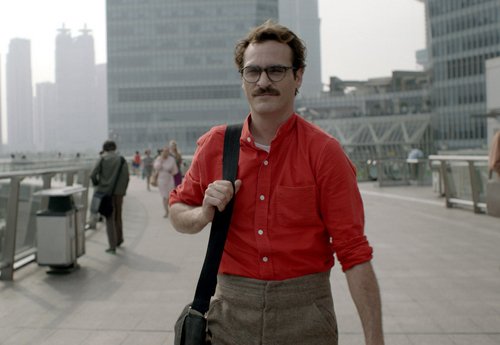 I have two words for you: Harry and High-Pants. Click image to read more about the costuming of Her.
I have two words for you: Harry and High-Pants. Click image to read more about the costuming of Her.
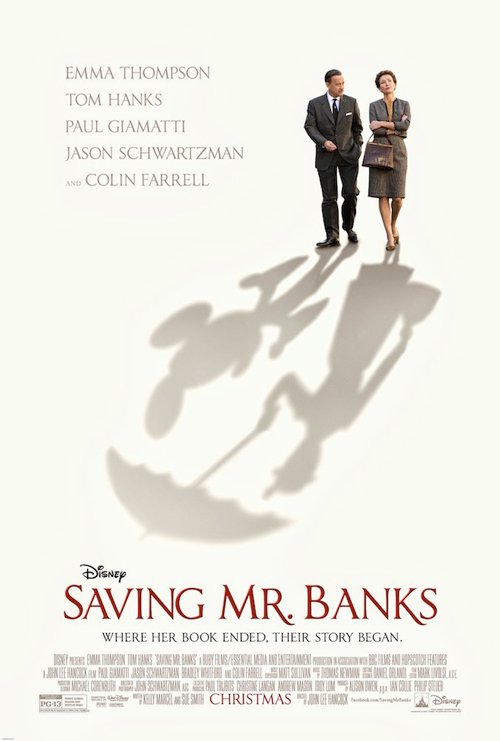 I am not a Tom Hanks fan at all. Never have been. I am proud to say I still have not seen Forrest Gump (except bits of it I caught in my peripheral vision while seated sideways – so as not to inadvertently glance at the tv – and couldn’t drown out with my walkman when I was once trapped on an interstate coach between Merimbula and Melbourne). I have managed to avoid Philadelphia, Saving Private Ryan, The Green Mile and all the other schmaltzy propaganda he has been involved in. Nor was I ever particularly into Mary Poppins, but I do like Emma Thompson.
I am not a Tom Hanks fan at all. Never have been. I am proud to say I still have not seen Forrest Gump (except bits of it I caught in my peripheral vision while seated sideways – so as not to inadvertently glance at the tv – and couldn’t drown out with my walkman when I was once trapped on an interstate coach between Merimbula and Melbourne). I have managed to avoid Philadelphia, Saving Private Ryan, The Green Mile and all the other schmaltzy propaganda he has been involved in. Nor was I ever particularly into Mary Poppins, but I do like Emma Thompson.
Saving Mr Banks
When I first saw the trailer for Saving Mr Banks, directed by John Lee Hancock, I was caught by surprise. I knew nothing of this story at all, or about PL Travers, and very little about Walt Disney, but the trailer caught my attention … It was obviously a good one, considering my avowed dislike of Hanks’ film history! A fictionalised recounting of PL Travers’ life, the author of the Mary Poppins books, and the story of how it came to be produced by Disney is truly interesting. It takes us into the processes of transforming a children’s book into a script for a musical, which is fascinating enough, but the personalities involved in the making of it add such depth and humanity.
Travers is an astonishing woman with a very forceful personality – her antics in the Disney studios made me alternately gasp and laugh. All the actors were great, playing their characters with sympathy and subtlety. I found the flashbacks to Travers’ childhood in Australia an absorbing and revealing counterpoint – Colin Farrell as Travers’ father had a wonderful rapport with his children (who else would so perfectly play the feckless Irishman?). The film is truly moving, a melding of heartbreak and hope.
The Bonus Film I Saw on DVD
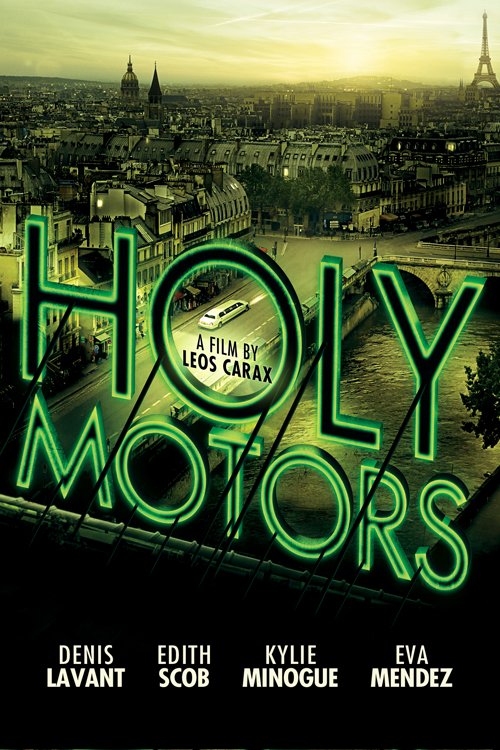 And the bonus film I saw yesterday on DVD: Holy Motors. This is an arty French film written and directed by Leos Carax that was well received by many critics and audiences, although it was sold to me by a close friend as a film she and her husband hated so much they could not watch more than twenty minutes of it. She exhorted me to see it just so she could hear what I thought of it. With such accolades, how could I resist?
And the bonus film I saw yesterday on DVD: Holy Motors. This is an arty French film written and directed by Leos Carax that was well received by many critics and audiences, although it was sold to me by a close friend as a film she and her husband hated so much they could not watch more than twenty minutes of it. She exhorted me to see it just so she could hear what I thought of it. With such accolades, how could I resist?
We follow the adventures of one man (Denis Lavant) chauffeured in his limo from appointment to appointment, each more strange and inexplicable than the last. His entire character changes with each stop, he passes through death into a new life, and it is impossible to decipher what is real and what is not.
I did not hate it however. I watched it through to the end, although I occasionally found myself feeling impatient with its sense of smug arty cleverness and had a feeling of wanting it to hurry along. Both beautiful and grotesque, I found it entertaining enough, although I remain unconvinced about its world (unlike with the world of Her) – it just seemed to be trying too hard to impress its audience. Perhaps it was too grandiose, too over-the-top to draw me in – its strangeness was too gaudy. And as for the very final scene with the limos (in entirely deserving all-caps): ATROCIOUS! Silly, unnecessary, and undermining the entire film. It is natural to seek clarification, understanding; to decode and decipher the hidden clues within a film such as this, but sometimes there are no answers. What is then left? The answer should be ‘art’, but in my view, Holy Motors is a paean to style over substance. I was left feeling dissastisfied.
But Wait, There’s More!
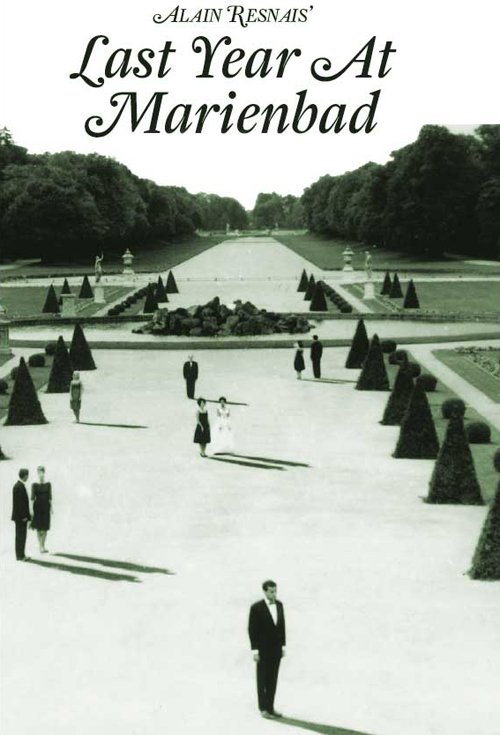 Right off the top of my head – if we’re talking mysterious cinematic puzzles – one of my all-time favourite films is Alain Resnais’ Last Year at Marienbad. Much has been written about this controversial 1961 film that fascinated and baffled critics and audiences alike, but its characters also populate an inexplicable and shadowy world that almost defies comprehension. It is poetically shot in black and white Cinemascope, carrying the mood of a dream one can’t quite remember, and ‘is a riddle of seduction, a mercurial enigma darting between a present and past which may not even exist, let alone converge’. [Rotten Tomatoes]
Right off the top of my head – if we’re talking mysterious cinematic puzzles – one of my all-time favourite films is Alain Resnais’ Last Year at Marienbad. Much has been written about this controversial 1961 film that fascinated and baffled critics and audiences alike, but its characters also populate an inexplicable and shadowy world that almost defies comprehension. It is poetically shot in black and white Cinemascope, carrying the mood of a dream one can’t quite remember, and ‘is a riddle of seduction, a mercurial enigma darting between a present and past which may not even exist, let alone converge’. [Rotten Tomatoes]
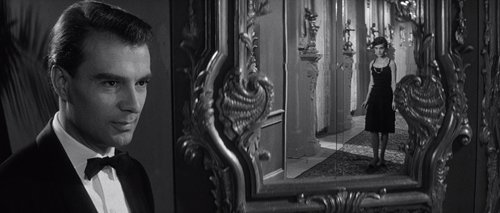 A film still of Last Year at Marienbad, with Giorgio Albertazzi and Delphine Seyrig
A film still of Last Year at Marienbad, with Giorgio Albertazzi and Delphine Seyrig
In an overblown baroque European hotel a man approaches a woman and tries to convince her they were romantically involved the year before – the woman denies it is so. Her husband is an intruder, a somewhat shadowy and sinister figure in the background. Time and space shifts along with truth and fiction to an almost indistinguishable degree. But logic has no place in this universe – it is a matter of indifference – what matters is the art of storytelling. And Resnais’ is a master – Carax cannot compare. This film holds me absolutely spellbound every time I watch it.
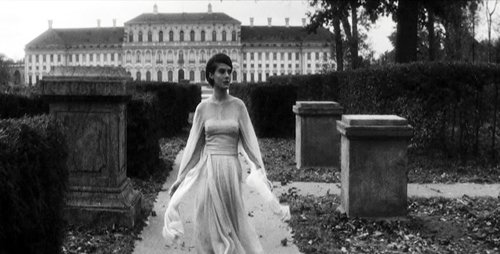 Delphine Seyrig in a film still of Last Year at Marienbad
Delphine Seyrig in a film still of Last Year at Marienbad

